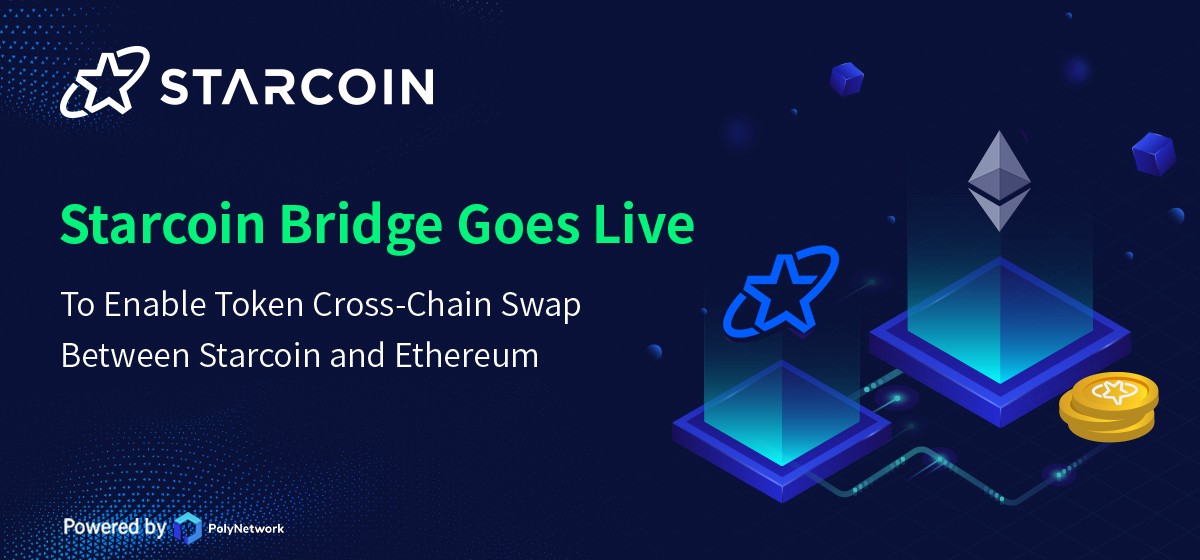Starcoin and Ethereum Cross-Chain Integration - Starcoin
Published at June 15, 2022 By Starcoin.

Cross-chain bridges are an indispensable part of the public chain ecosystem and a sure way to break down value silos to Web3. With the Starcoin launch on Poly Network, Starcoin ushers in the first cross-chain bridge for the Starcoin ecosystem. It is a significant milestone that marks the maturity of the Starcoin ecosystem.
As the first open network Move public chain, Starcoin’s bridge is not only a good thing for Starcoin but also for the Move ecosystem, which means that the Move ecosystem and the EVM ecosystem are interoperable for the first time and can swap freely from now on. Next, let’s quickly look at what kind of cross-chain bridge it is.
What is Cross-Chain Bridge?
Cross-Chain is designed to allow state on the chain to be shared or flow between one or more chains, provide cross-platform capabilities for DAPPs and maintain the freedom of choice for Web3 users. Cross-Chain Bridge is an infrastructure designed to solve this user pain point.
Cross-chain bridge is a new technical approach to opening the interaction between chains through cross-chain interoperability protocols based on the existing single blockchain architecture design. Solving the problem of value silos, breaking the ecosystem’s boundaries, and allowing users to exchange freely. Therefore, the cross-chain bridge is the standard of ecological maturity for the chain, just like a river merging into the embrace of the sea, with milestone significance.
Since cross-chain and cross-chain bridges are so important, let’s understand the structure and classification of cross-chain bridges. There are various ways to classify cross-chain bridges, and Vitalik Buterin, the founder of Ethereum, has divided cross-chain protocols into three types.
Notary schemes: Through a common trusted third party to act as a notary between two chains, the notary will help verify the transaction.
Hash-locking: Introducing an intermediary account (private key) and expiration time in the transaction process to pledge assets and prevent cheating.
Sidechains / relays: A separate chain dedicated to cross-chains, used to confirm transactions between different public chains.
Although they all address the needs of cross-chain, the above three types of cross-chain technologies have their advantages and disadvantages in terms of models.
\1. Rotary mechanism is simple but also has the disadvantage of centralization, usually using exchanges as notaries.
\2. Hash locking, essentially through the pledge to achieve a cross-chain effect, the disadvantage is that it does not support multi-currency, and the scene is limited.
\3. Sidechain/relay, to meet the decentralization, but the complexity will be much higher.
The first Starcoin cross-chain bridge, powered by Poly Network, is a sidechain/relay model. It fits well with Starcoin’s philosophy of security and decentralization. Next, let’s learn more about Starcoin and Poly Network.
Starcoin will soon launch its first cross-chain bridge.
Starcoin is a resource and value-based platform, A universal Web3 platform with security value.
Starcoin’s Layer1 is a decentralized smart contract network that uses Move, a resource-oriented programming smart contract language. It aims to provide a secure digital asset and decentralized financial operation platform that takes security as its primary goal and makes every effort to secure users’ on-chain digital assets.
After a year since the launch of Starcoin’s network, the Starcoin ecology has experienced rapid DeFi development, with various DeFi applications such as Starswap, KikoVerse, Bfly, and others coming on board. Recently, the Starcoin ecology has received a necessary upgrade with the upcoming arrival of PolyBridge, the first cross-chain bridge.
Poly Network is based on the sidechain/relay model with a two-layer structure design, using Poly relay chains as cross-chain coordinators, multiple heterogeneous chains as cross-chain transaction executors, and Relayer as a cross-chain information mover, realizing a secure, easy-to-use and efficient cross-chain system by solving the problems of validity, security and transaction of cross-chain information.
As we can see, Starcoin and Poly Network serve users in different scenarios, and we believe this collision will significantly enhance both parties. After the cross-chain bridge goes online, the DeFi infrastructure of Starcoin ecology will be complete, and then it will enter the next stage of rapid development. starcoin will also be the first Move public chain to realize cross-chain.
Starcoin and Ethereum cross-chain freely, Move ecosystem interoperates with the EVM ecosystem.
The first public chain Starcoin connects via a cross-chain bridge is Ethereum.
Starcoin is the first open public chain using the Move smart contract language, and Ethereum is the first public chain in the EVM ecology. It is of great significance.
When the cross-chain bridge goes live, the first phase will realize the free transfer of the following types of Tokens between Starcoin and Ethereum.
ETH
USDT
STC
The above 3 types of Tokens are the first FTs to transfer across chains freely. Shortly, more Tokens will be supported, and there could even be an opportunity to support NFTs.
With the cross-chain bridge coming online, Starcoin uses the more secure Move as the smart contract language and focuses on secure DeFi, so I believe it will be intensely competitive. Especially in the era of DeFi, where vulnerabilities are frequent, those DeFi teams with security concepts and those users who expect data security will definitely join Starcoin through cross-chain.